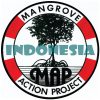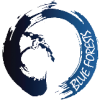Who We Are
Brief History of Blue Forests
Blue Forests began to work in 2000 in Indonesia. Originally, it was named Yayasan Akar Rumput Laut, then it changed to Mangrove Action Project – Indonesia prior to the establishment of Yayasan Hutan Biru (Blue Forests) in 2011.
We create collaboration to examine how land and water usage along with the cultural practices affect the watersheds and vice versa. Blue Forests encourages learners to be involved in the complex, real-world concerns, that extend across traditional boundaries
Blue Forests officially registered under the decision of the Ministry of Law and Human Rights on October 19, 2011 with registration number AHU-8881.AH.01.04.




MISSION
Blue Forests deploys an action-research and problem-solving process based on “local to global to local”. We aim to increase the social-economic and ecological resilience of critical watershed systems across the mountains and seas.

VISION
Providing a healthy environment to create resilient communities, flowing from upper to mid to lower watershed like a river.
Goals
The process is known as action-research and problem solving, which embodied in all Blue Forets programs to achieve three interrelated goals:
- Acquainting communities with the environmental problems and characteristics of their local watershed, provide the ‘hands-on’ experience in social, economic and ecological research related to watersheds.
- Promoting intercultural communication and understanding to fostering awareness of the global context of local environmental issues. Take into account the cultural perspectives in identifying effective problem-solving strategies.
- Taking local action, to improve social, economic and ecological conditions of the watershed and its communities. This often involves community organization which emphasizes gender issues (social enhancement), development of small and medium enterprises based on sustainable use of watershed resources (economic enhancement), ecological habitat rehabilitation, and development of adaptive, collaborative watershed management (environmental enhancement).
Local to Global to Local
Many people have seen the bumper stickers or heard of the paradigm “Think Globally, Act Locally.” Blue Forests uses a similar paradigm to guide our approach during action-research, problem-solving programs with youth and adults alike. Our paradigm has one additional step and reads, “Local to Global to Local.”
The Step
Local Assessment
Participants in Blue Forests’ programs initially undertake assessments of their LOCAL situation.
Explore Globally
Search GLOBALLY for information on the problem, and how other communities may have addressed a similar issue.
Back to Local
Develop an action plan at the local level to resolve the identified issue. This is the problem-solving phase.
Key Points
Thus, the Local to Global to Local paradigm engages community members in the active identification of issues of mutual concern, followed by issue-resolution or problem-solving. By choosing a single issue to address, participants learn how to make a positive changes in their community, which leads to empowerment.
One added note, research from Australia shows that when the youth, under the age of 15 are involved in Action-Research and Problem-Solving, they develop critical thinking skills and have a high chance of becoming life-long change-makers. This is the goal of Blue Forests, to our coastal community members into solving problems of mutual concern and becoming critical thinkers and change-makers.
